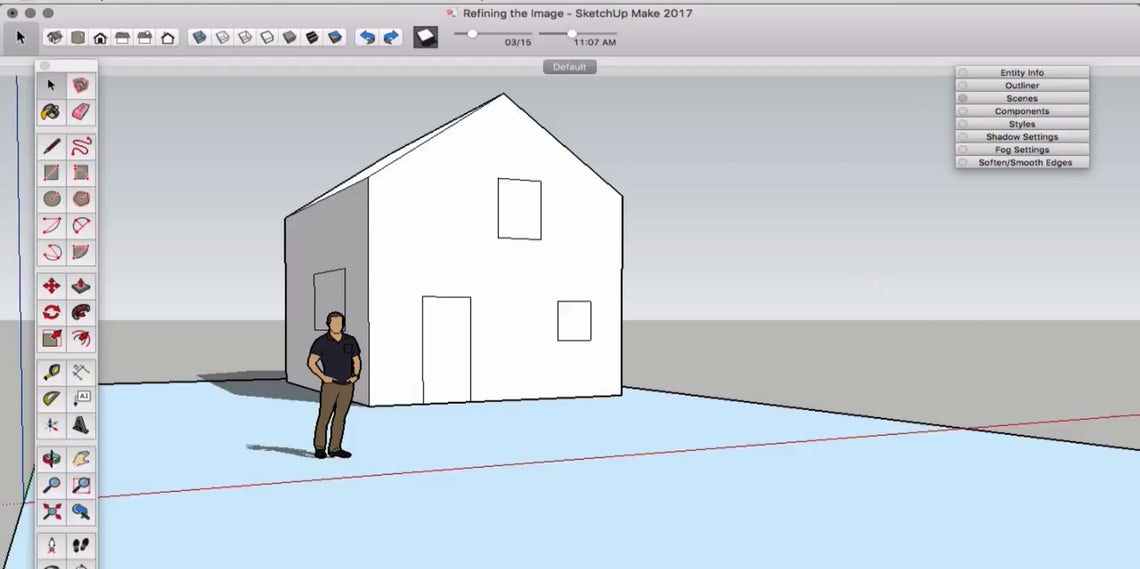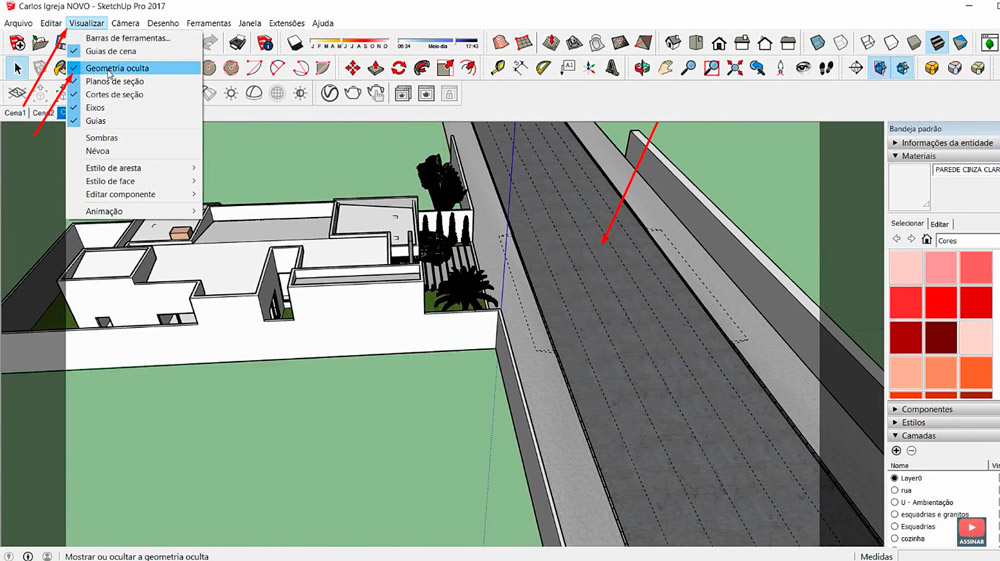
LayOut now understands a lot more about your SketchUp model and what you've overridden. Way less going back and forth updating scenes in SketchUp to ensure your drawing comes out perfectly, now you have more editing ability right in LayOut.

It's all about taking back control.document control that is! For LayOut, we focused on improving the interaction between SketchUp & LayOut to save you time and energy. Most new users with experience in Photoshop (and LayOut!) are disadvantaged by calling them layers, since it implies a 2D stacking order.ĭon't worry these two terms are merely document naming conventions and won't hinder your workflow.

'Layer' has been a rather unintuitive thing to call this organizational utility. Also, Layers are now referred to as "Tags". Now you can save those syllables for words like "stupendous" and "dapper" (Why, thank you! We think you are too.). This just means we don't have to say "groups (slash) components" anymore. Objects are now a collective term for: groups, components, dynamic components and Section Planes. We think they make logic a little more prevalent. This won't change your workflow, but we want you to know that it's not just you - we are talking about a few things differently now.
#Take screenshot sketchup online update
yes you can do that in SketchUp! Landscape architects, rejoice! The SketchUp Universe: NomenclaturesĪfter many conversations, we decided to update some of our naming conventions. For example, let's say you want to edit hidden edges in a landscape or smoothed surface, but you still want to be able to hide objects that are nearby (like trees, bushes, or a building). How will this change your workflow? Well, this will give you the ability to better manage hidden geometry and hidden objects for an even easier modeling experience. Don't take our word for it: start positioning those objects in hard to reach places to see that SketchUp magic! Hidden objectsĪnnouncing a big change to hiding objects in your models! You'll notice in your drop-down menu that we decoupled hiding objects from hiding geometry. Fancy, huh? This will literally ‘transform' your workflow. This works with both the Rotate tool and Move tool. When you grab a point in an object and start to move it, your object will automatically go transparent as soon as something in your model interferes with the object you are moving. If you'd rather grab the midpoint, center or centroid of the object, press the down arrow to cycle through the available grip points. Selected groups and components now display grips on the bounding box corners, allowing for quick and accurate placement. Grab that sofa and put it in the corner! Just try it out, we need not explain more. Grips on bounding boxes and automatic transparency

We recommend using this (and our friendly eyeball icon) to toggle between the major chunks of your model.Īnother bonus: Groups and components that are hidden by tag (formerly known as layers) now show up in the outliner. You can do your main model organization straight within Outliner.

In an effort to increase model performance, you no longer have to create Layers upon Layers. This leads us to our BIG model organization change.
#Take screenshot sketchup online software
We want to make sure we continue to be the more intuitive, easier to use software that boosts your ability to crank out those stunning design projects. This year, we focused on data structures and modeling behaviors. SketchUp Desktop 2020: your creative space So, thanks for speaking up! You helped us discover how you're using SketchUp and how we can improve your design process, resulting in workflow improvements galore! They're so good you'd think we'd been sneaking into design firms or something :). We've been eyeing your comments on the forum and discussing ideas during our training events to see what trips up your workflow. We've spent a lot of time in 2019 learning more about what you, the user, wish SketchUp did better.


 0 kommentar(er)
0 kommentar(er)
